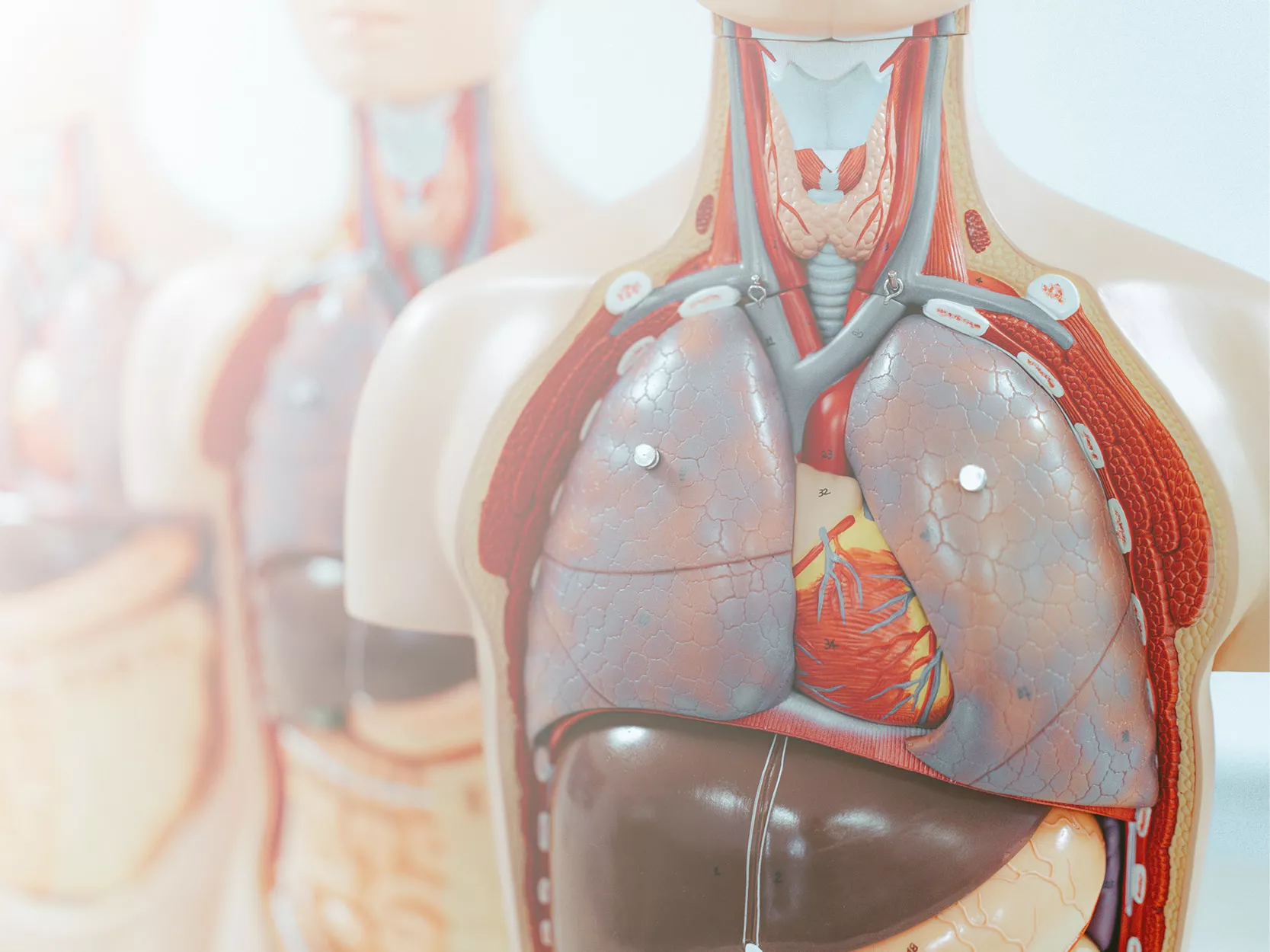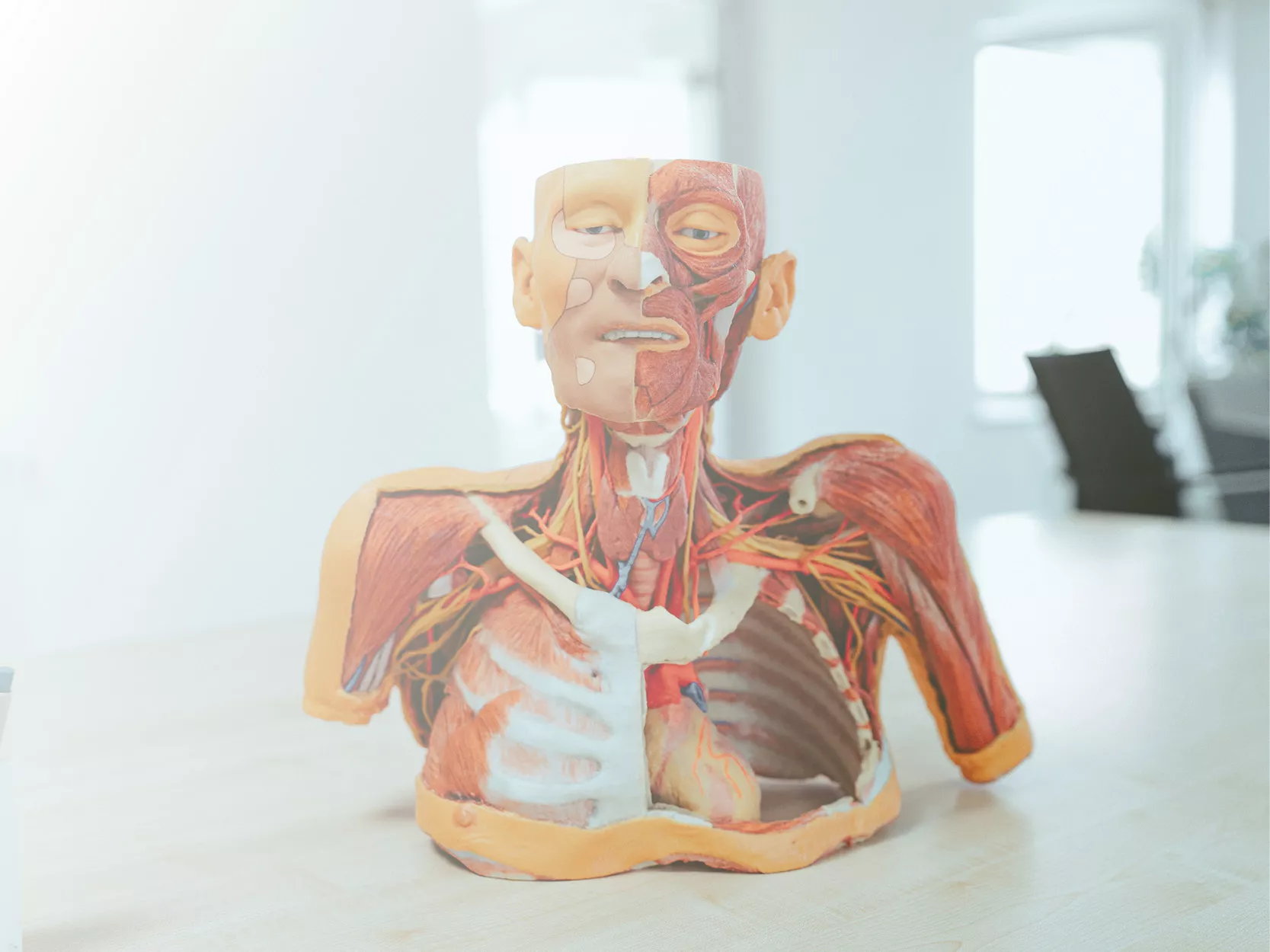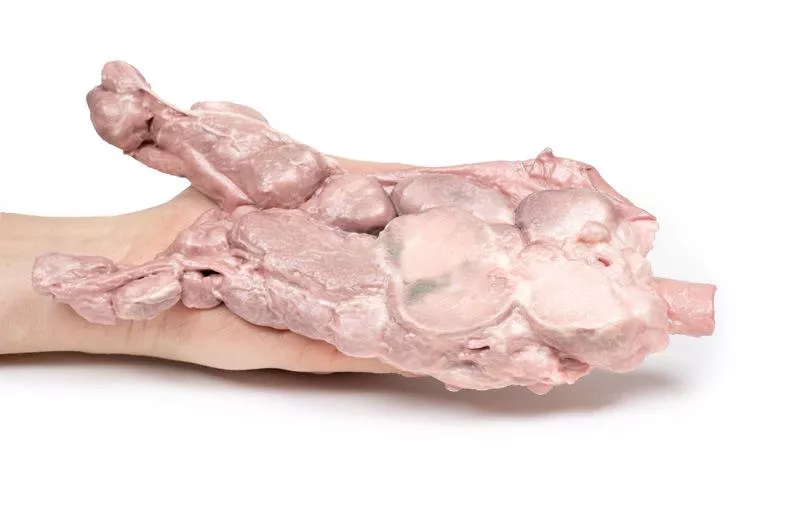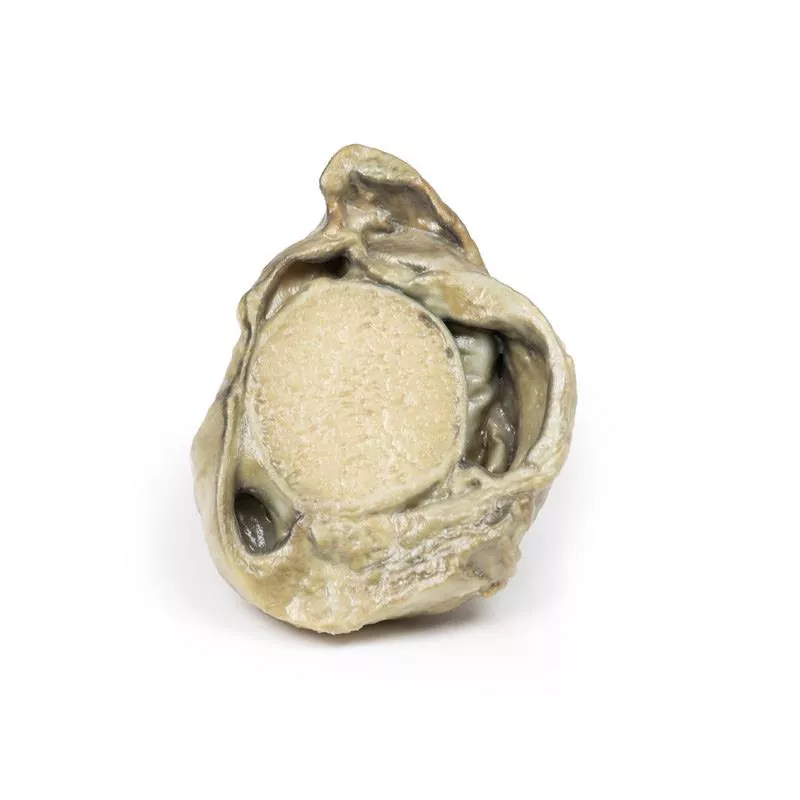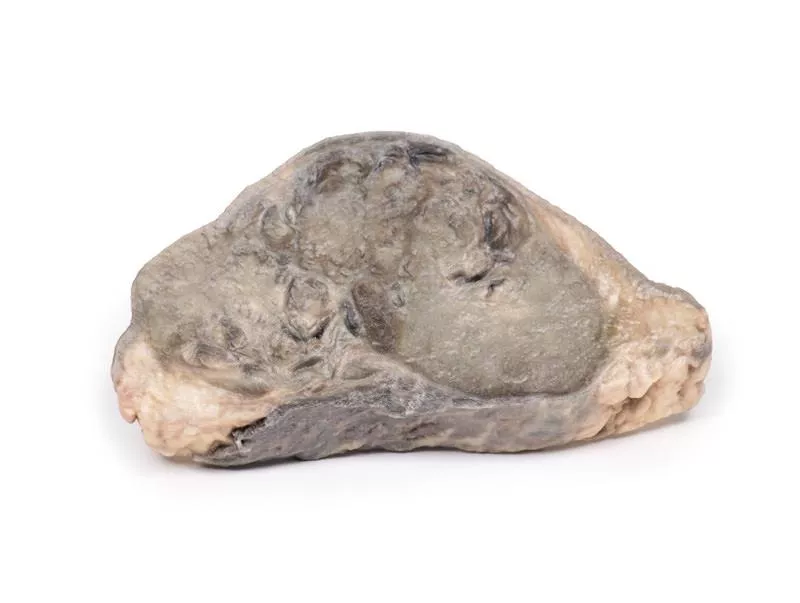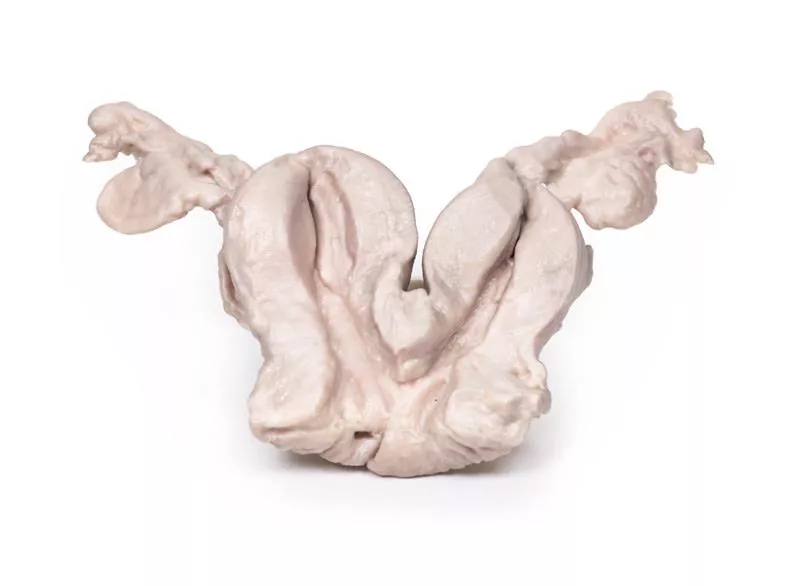Product information "Aorta & para-aortic lymph nodes"
Clinical History
This case involves a 75-year-old woman who presented with recurrent symptoms five years after initial treatment for stage IIIc serous adenocarcinoma of the ovary. She was diagnosed with chemo-resistant retroperitoneal lymph node metastases, involving both para-aortic and pelvic nodes, as shown on PET/CT imaging. Unfortunately, she died of liver complications before options like radical lymphadenectomy could be explored.
Pathology
The specimen includes the abdominal aorta and common iliac arteries, surrounded by a large number of enlarged para-aortic and iliac lymph nodes. Histopathological analysis confirmed metastatic high-grade adenocarcinoma in several of these nodes.
Further Information
In some cases of recurrent ovarian cancer, lymph node metastases may be the only sign of disease. In this patient, PET/CT findings accurately predicted all metastatic nodes. While ultrasound (US) could have also detected the enlarged nodes, both PET/CT and US may miss microscopic disease, making it difficult to fully exclude lymph node involvement during follow-up.
In younger women with recurrent ovarian cancer but no other spread, systematic dissection of aortic and pelvic nodes may offer symptom relief and open the door for novel therapies, although it is rarely curative.
More typically, pelvic and aortic lymph node sampling forms part of initial surgical staging in epithelial ovarian cancer. For women with advanced-stage disease, surgical removal of enlarged retroperitoneal lymph nodes may be appropriate if it enables complete tumour debulking.
This case involves a 75-year-old woman who presented with recurrent symptoms five years after initial treatment for stage IIIc serous adenocarcinoma of the ovary. She was diagnosed with chemo-resistant retroperitoneal lymph node metastases, involving both para-aortic and pelvic nodes, as shown on PET/CT imaging. Unfortunately, she died of liver complications before options like radical lymphadenectomy could be explored.
Pathology
The specimen includes the abdominal aorta and common iliac arteries, surrounded by a large number of enlarged para-aortic and iliac lymph nodes. Histopathological analysis confirmed metastatic high-grade adenocarcinoma in several of these nodes.
Further Information
In some cases of recurrent ovarian cancer, lymph node metastases may be the only sign of disease. In this patient, PET/CT findings accurately predicted all metastatic nodes. While ultrasound (US) could have also detected the enlarged nodes, both PET/CT and US may miss microscopic disease, making it difficult to fully exclude lymph node involvement during follow-up.
In younger women with recurrent ovarian cancer but no other spread, systematic dissection of aortic and pelvic nodes may offer symptom relief and open the door for novel therapies, although it is rarely curative.
More typically, pelvic and aortic lymph node sampling forms part of initial surgical staging in epithelial ovarian cancer. For women with advanced-stage disease, surgical removal of enlarged retroperitoneal lymph nodes may be appropriate if it enables complete tumour debulking.
Erler-Zimmer
Erler-Zimmer GmbH & Co.KG
Hauptstrasse 27
77886 Lauf
Germany
info@erler-zimmer.de
Achtung! Medizinisches Ausbildungsmaterial, kein Spielzeug. Nicht geeignet für Personen unter 14 Jahren.
Attention! Medical training material, not a toy. Not suitable for persons under 14 years of age.





